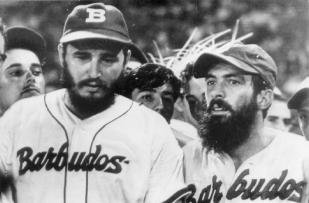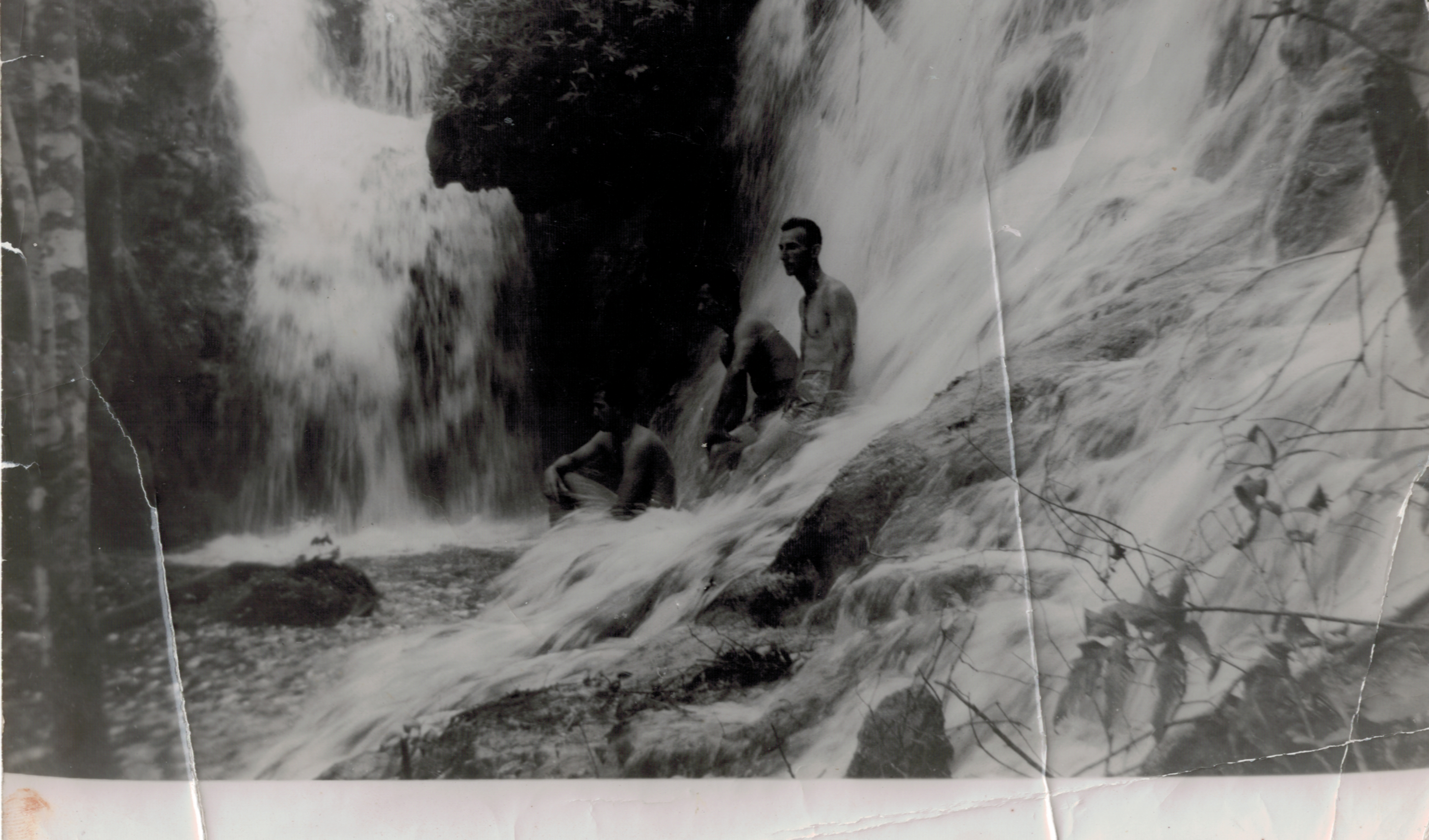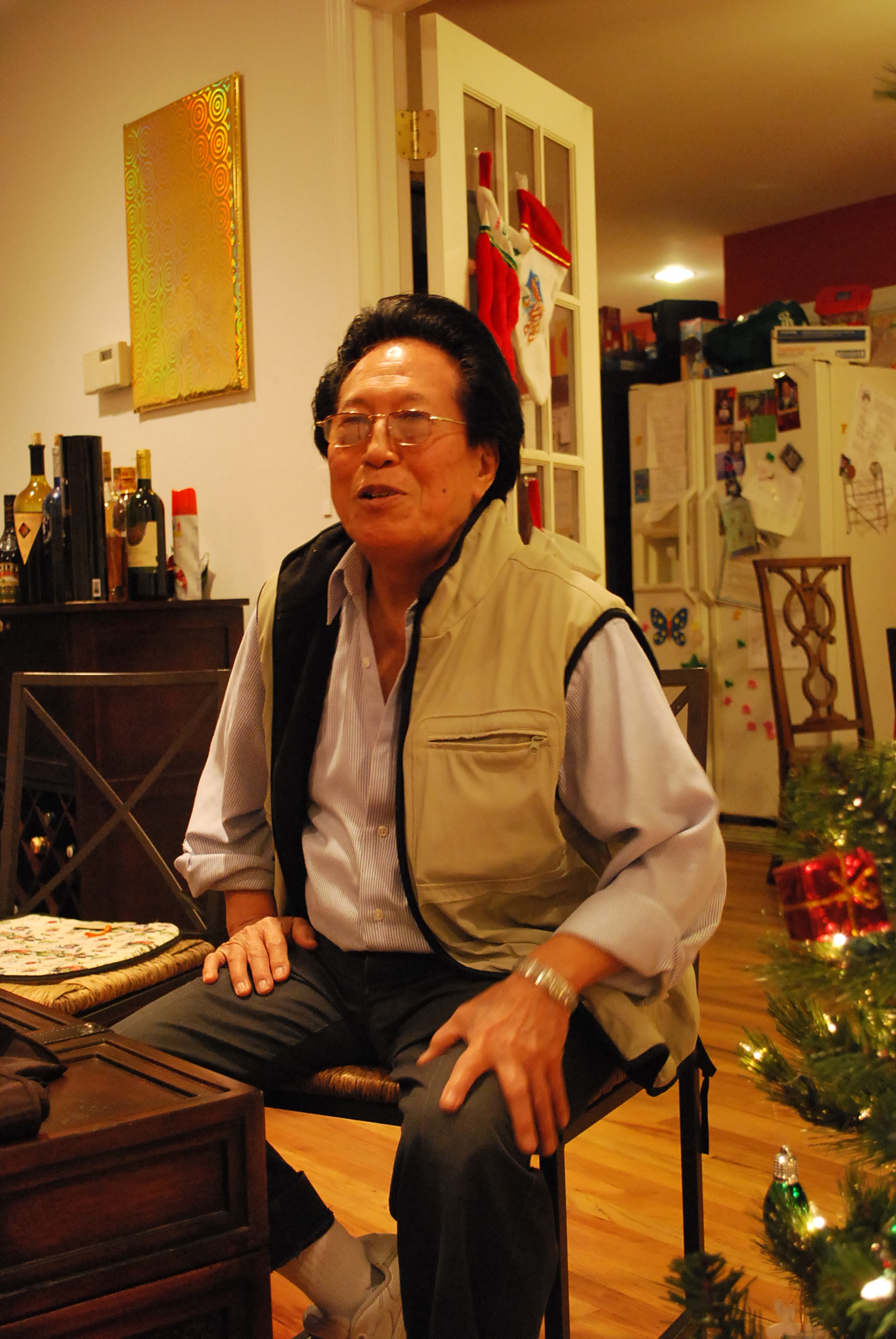|
Yaguajay
Yaguajay () is a municipality and town in the Sancti Spíritus Province of Cuba. It is located in the northern part of the province, and borders the Bay of Buena Vista to the north. The Caguanes National Park (protecting swamp and coastal ecosystems, caves and mural art) is located in Yaguajay. Geography The municipality was divided into the barrios of Bamburanao, Cabecera, Centeno, Mayajigua, Meneses and Seibabo. It is currently divided into the ''consejos populares'' (popular councils, i.e. hamlets) of CAI Aracelio Iglesias, El Río, Iguará, Itabo, Jarahueca, La Loma, Mayajigua, Meneses, CAI Obdulio Morales, Perea, Sansaricq, Seibabo, CAI Simón Bolivar, Turquino I, Turquino II and Venegas. ( EcuRed) < ...
|
Camilo Cienfuegos
Camilo Cienfuegos Gorriarán (; 6 February 1932 – 28 October 1959) was a Cuban revolutionary born in Havana. Along with Che Guevara, Fidel Castro, Juan Almeida Bosque, and Raúl Castro, he was a member of the 1956 ''Granma (yacht), Granma'' expedition, which launched Fidel Castro's armed insurgency against the government of Cuban dictator Fulgencio Batista. He became one of Castro's top guerrilla commanders, known as the "Battle of Yaguajay, Hero of Yaguajay" after winning a key battle of the Cuban Revolution. His signature weapons were a Thompson submachine gun, M1921AC Thompson and a modified M1 carbine, M2 carbine. He was appointed head of Cuba's armed forces shortly after the victory of Castro's rebel army in 1959. He was presumed dead when a small plane he was traveling in disappeared during a night flight from Camagüey to Havana later that year. Many have speculated and conspiracies have arisen concerning his mysterious disappearance. Cienfuegos, whose name translates ... [...More Info...] [...Related Items...] OR: [Wikipedia] [Google] [Baidu] |
Luis Valdés
Luis German Valdés Larralde, MD (March 27, 1923 – August 15, 2012) was a Cuban-American surgeon. Biography Early life Son of German Valdés, MD, a prominent dentist, physician and landowner in Yaguajay, Cuba, Yaguajay his mother was Josefa Larralde, daughter of another prominent Yaguajay citizen Don Marcos Larralde. As a boy, Luis German Valdés discovered th"Cuevas De Valdés"when he was 13 years old. The photograph at the left of his friends at Cuevas De Valdés was given to him by his friend Wilfredo Celaya a few days before he left his surgical pathology fellowship at Harvard, USA. Athletic, he was known for his swan dive. Educated in the Jesuit tradition at Belen Jesuit Preparatory School, Belen he graduated in 1939 at the age of 16, began medical school and graduated from University of Havana with the degree of Doctor of Medicine in 1946. He was profoundly influenced by Agrupación Católica Universitaria and personally knew the founders. He attended Harvard Universi ... [...More Info...] [...Related Items...] OR: [Wikipedia] [Google] [Baidu] |
Caguanes National Park
Caguanes National Park ( es, Parque Nacional Caguanes) is a national park in Cuba. It is located in the Yaguajay municipality in the northern part of Sancti Spíritus Province, on the northern (atlantic) coast of Cuba. It is established around the Caguanes peninsula and includes 10 small cays (Cayos de Piedra) that reach out in the Bay of Buena Vista (a Ramsar Convention site), as well as the ''Guayaberas'' swamps and mangroves. The park covers an area of . Conservation The coastal landscape is characterized by caves, arches and niches that open to the sea. A total of 79 caves were numbered in the area. The ecosystem consists of more than 200 species, 24 of them endemic. 112 species of birds nest in the marsh and coastal area. A large population of mariposa bats is present in the ''Tres Dolinas'' cave. A decline in migratory aquatic birds ( spoonbills, flamingo Flamingos or flamingoes are a type of wading bird in the family Phoenicopteridae, which is the only extant f ... [...More Info...] [...Related Items...] OR: [Wikipedia] [Google] [Baidu] |
Taismary Agüero
Taismary Agüero Leiva (born March 5, 1977) is a Cuban-born Italian volleyball player. She is the only player to represent two women's volleyball national team to win Major titles (1995 FIVB World Cup, 1996 Atlanta Olympic Games, 1998 FIVB World Championship, 1999 FIVB World Cup and 2000 Sydney Olympic Games for Cuba; 2007 FIVB World Cup for Italy). Life Born in Yaguajay in the province of Sancti Spiritus, when she began to play volleyball when she was eight years old. Two years later, she entered in the Cerro Pelado Training Center in Havana. In 1993 she won the junior women's volleyball world championship and then joined the senior national team. She did not participate in the 1994 FIVB Women's World Championship, but she won the gold medal at the 1996 Summer Olympics in Atlanta two years later. In 1998 together with Mireya Luis, Regla Bell, Ana Ibis Fernandez, and Mirka Francia she won the 1998 FIVB Women's World Championship in Japan. In 2000, she was a member of the Cub ... [...More Info...] [...Related Items...] OR: [Wikipedia] [Google] [Baidu] |
Alfredo Abon Lee
Captain Alfredo Abón Lee (1927 – December 4, 2012) was a Cuban army officer of Chinese Cuban ancestry who was the commander of the garrison at Yaguajay Squadron and was sent to Las Villa, replacing Colonel Roger Rojas Lavernia, where he fought the 26th of July Movement in December 1958 in one of the final engagements of the Cuban Revolution. , Radio Caribe en la Isla de la Juventud Cuba Before that, he served in the Battalion 22 during operations in Eastern Cuba. He died on December 4, 2012 in , United States
[...More Info...] [...Related Items...] OR: [Wikipedia] [Google] [Baidu] |
José Miller
Dr. Josie Miller (1925, Yaguajay, Cuba - February 27, 2006, Havana) was the leader of the Jewish community of Cuba for 25 years, from 1981 when the community was tiny and endangered, through the 1990s during which they returned to vigorous growth and reemerged on the world stage. He held the dual positions of head of the Coordinating Commission (the official organization of Cuban Jewry) and head of the Patronato (the country's largest synagogue). Miller was the interface between the Cuban Jewish community, the government of Fidel Castro, and the world organizations which wished to provide assistance to Cuban Jewry. His skills in diplomacy and arbitration allowed him to meld the often conflicting demands of these disparate groups into a compromise which was acceptable to all. In 1924 Miller's parents immigrated from Poland to Cuba, where his father became a peddler and eventually a merchant. Although his family maintained a traditional Jewish home, in the small town of Yaguajay th ... [...More Info...] [...Related Items...] OR: [Wikipedia] [Google] [Baidu] |
Municipalities Of Cuba
The Provinces of Cuba, provinces of Cuba are divided into 168 municipality, municipalities or ''municipios''. They were defined by Cuban Law Number 1304 of July 3, 1976Fifth United Nations Conference on the Standardization of Geographical Names, Vol. II, published by the United Nations, New York, 1991 and reformed in 2010 with the abrogation of the municipality of Varadero and the creation of two new provinces: Artemisa Province, Artemisa and Mayabeque Province, Mayabeque in place of former La Habana Province. Summary The municipalities are listed below, by province: List of municipalities Municipal maps The maps below show the municipal subdivision of each province, in yellow, within Cuba. Each provincial capital is shown in red. Artemisa (Cuban municipal map).png, Artemisa Province, Artemisa Camagüey (Cuban municipal map).png, Camagüey Province, Camagüey Ciego de Ávila (Cuban municipal map).png, Ciego de Ávila Province, Ciego de Ávila Cienfuegos (Cuban municipal map). ... [...More Info...] [...Related Items...] OR: [Wikipedia] [Google] [Baidu] |
Sancti Spíritus Province
Sancti Spíritus () is one of the provinces of Cuba. Its capital is the identically named Sancti Spíritus. Another major city is Trinidad. Geography The southern coast of the province is flat, but the western portion of Sancti Spíritus province is mountainous. The southeast has numerous mangroves and swamps. The northern coast contains significant wetlands and protected areas such as the Bay of Buena Vista and the Caguanes National Park. The largest man made reservoir in Cuba, the Embalse Zaza, is in Sancti Spíritus province. History During the 17th century, both Dutch and British pirates attempted to take control of what is today Sancti Spíritus province, but with little success, as the Spanish garrison held them off. From 1660 to 1680, Trinidad was plagued by pirates from Jamaica and Tortuga, and on two occasions, pirates razed the city. The provinces of Cienfuegos, Sancti Spíritus, and Villa Clara were once all part of the now defunct province of Las Villas. Economy ... [...More Info...] [...Related Items...] OR: [Wikipedia] [Google] [Baidu] |
Remedios, Cuba
Remedios (), also known as San Juan de los Remedios, is a city and municipality located from the northern coast of Cuba, in the center of the island. It is the oldest Spanish settlement in the former Las Villas province. It is now part of the province of Villa Clara. It was declared a City by Isabella II of Spain, when the island was still a colony. Remedios is known as the Cradle of the Parrandas, possibly the Caribbean's largest and oldest traditional festival. Its patrons are John the Baptist and the Virgin of the Buenviaje. Geography Remedios is located about 4 hours by bus from Havana, and around 50 minutes from Santa Clara. It is less than an hour from here to beach resorts in the Santa María – Las Brujas cays, both situated north of the province. The municipality is bordered on the north by Caibarien, to the south by Camajuani and Placetas, and to the east by Yaguajay (formerly known as Sancti Spiritus). Remedios has 10 Consejos Populares which include: Remedios I, ... [...More Info...] [...Related Items...] OR: [Wikipedia] [Google] [Baidu] |
Caibarién
Caibarién is a municipality city in the Villa Clara Province, Villa Clara province of Cuba. Caibarién is known as "La Villa Blanca" () for its sands and beaches. They are famous for their "Parrandas" (Carnivals) along with Remedios, Cuba, Remedios (the neighboring town located west) and Camajuani. History The town was founded on October 26, 1832 from a map designed by Estratón Bauza. For his constant concern and tenacity in their efforts, and because he offered some of his lands and also economic concessions to the founding of the town Don Narciso de Justa is considered the founder of Caibarién. On 1834 it was named Colonia de Vives, but in 1837 the original name (''Caibarién'') was restored. On September 19, 1873 it was awarded the title village. In 1878 the town already had stores, churches, schools and newspapers. Founded in Caibarién on October 25 was the committee of the Cuban Liberal Party, and elections were prepared between the Liberal Party and the Constitutiona ... [...More Info...] [...Related Items...] OR: [Wikipedia] [Google] [Baidu] |
Cabaiguán
Cabaiguán () is a municipality and town in the province of Sancti Spíritus, Cuba. With an urban population of 30,135 is the 3rd largest town of the province. Overview It was founded in 1894, and established as a municipality in 1926. The municipality is divided into the ''consejos populares'' (i.e. "popular councils") of Cabaiguán and the villages of Neiva, Pedro Barba, Guayos and Santa Lucía. Demographics In 2004, the municipality of Cabaiguán had a population of 67,224. With a total area of , it has a population density of . Cabaiguan was known as the Cuban epicenter of migration from the Canary Islands. Economy Cabaiguán is best known for its cigars; and there is a small cigar factory where various brands of international renown are produced. It also has an oil refinery built in 1947 and the Nieves Morejon quarry, where the Provincial Prison is located. Transport The town straddles the Carretera Central highway and is served by the A1 motorway. It has a railway stati ... [...More Info...] [...Related Items...] OR: [Wikipedia] [Google] [Baidu] |
Chambas
Chambas is a municipality and town in the Ciego de Ávila Province of Cuba. Geography It is located in the northern part of the province, bordering the municipalities of Morón and Florencia, as well as the province of Sancti Spíritus. To the north it borders the Bay of Buena Vista and the Laguna de Leche. It comprises the villages of El Asiento, El Calvario, Falla, Kilo 9, Las Palmas, Los Perros, Mabuya, Piedra, Punta Alegre, Punta San Juan (Maxímo Gómez Sugar Mill) and Ranchuelo. Demographics In 2004, the municipality of Chambas had a population of 39,868. With a total area of , it has a population density of . See also *Chicola *Chambas Municipal Museum *Municipalities of Cuba The provinces of Cuba are divided into 168 municipalities or ''municipios''. They were defined by Cuban Law Number 1304 of July 3, 1976Fifth United Nations Conference on the Standardization of Geographical Names, Vol. II, published by the United N ... * List of cities in Cuba References Ex ... [...More Info...] [...Related Items...] OR: [Wikipedia] [Google] [Baidu] |




